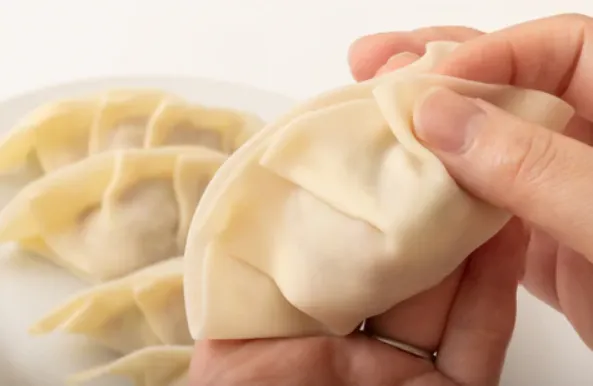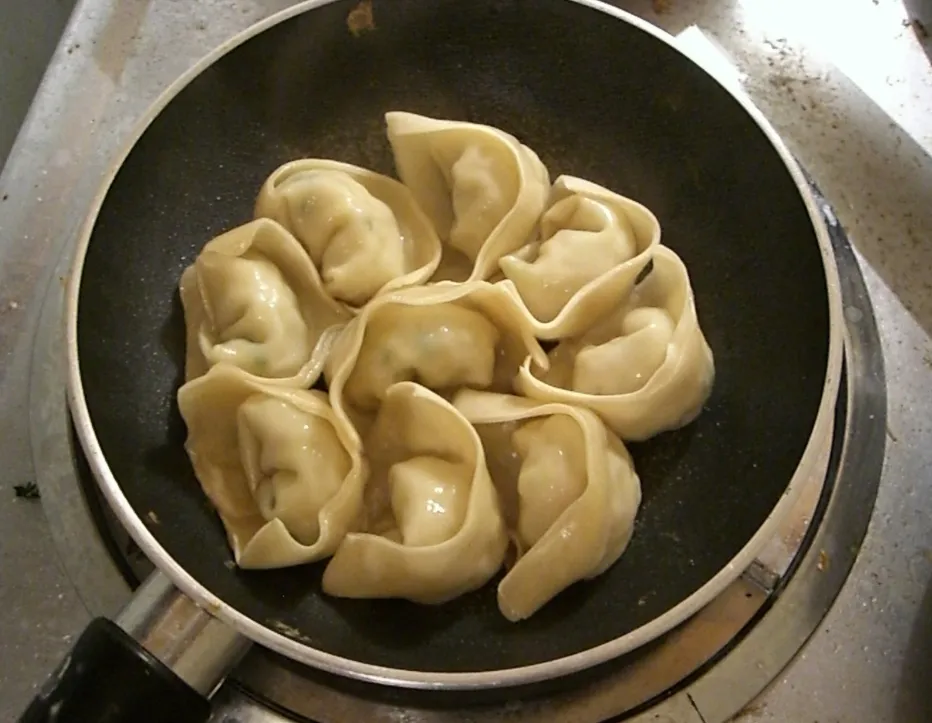The Japanese Chukanabe: How Japan Perfected Chinese Wok Cooking
The Japanese Chukanabe: How Japan Perfected Chinese Wok Cooking
 Japanese chukanabe (中華鍋) being used to prepare chuka ryori - Japanese-style Chinese cuisine
Japanese chukanabe (中華鍋) being used to prepare chuka ryori - Japanese-style Chinese cuisine
The wok's journey across Asia led to its firm establishment in Japan, where it is known as a chukanabe (中華鍋), a name that literally translates to "Chinese pot." While not a traditional tool in classical Japanese cuisine (washoku), the chukanabe is a cornerstone of a popular and distinct culinary genre: chuka ryori, or Japanese-style Chinese food.
Cultural Note: The term "chukanabe" reveals Japan's direct acknowledgment of the wok's Chinese origins, unlike many culinary adoptions where tools are given entirely new names.
Understanding the role of the chukanabe requires exploring this unique fusion cuisine and clarifying a common point of confusion with another famous Japanese dish, chankonabe.
The Chukanabe and Japanese Craftsmanship
In Japan, the wok is used for a wide range of cooking methods, including stir-frying, deep-frying, and steaming, much like in its country of origin. The country is also home to esteemed wok manufacturers, such as Yamada Kogyosho, a company renowned for its unique uchidashi (hand-hammered) production method.
Manufacturing Insight: The uchidashi technique involves a single sheet of iron being struck thousands of times by a machine-powered hammer to form the wok's shape. This process, performed while the iron is cold, strengthens the metal, making the resulting wok exceptionally durable, lightweight, and an excellent conductor of heat.
This traditional technique represents the Japanese approach to perfecting foreign technologies—taking an existing concept and refining it to the highest possible standard through meticulous craftsmanship. Japanese uchidashi craftsmanship exemplifies what to look for in a quality wok and demonstrates why carbon steel remains superior for professional results.
Chuka Ryori: Chinese Food Through a Japanese Lens
The primary domain of the chukanabe in Japan is chuka ryori. This style of cooking emerged as Chinese dishes were adapted to suit Japanese tastes, a process that gained significant momentum after World War II with the influence of Chinese immigrants and Japanese citizens returning from mainland China.
Historical Context: The post-WWII period saw massive cultural exchange as Japan rebuilt. Chinese culinary techniques merged with Japanese ingredients and preferences, creating an entirely new category of cuisine.
Chuka ryori is a staple of casual dining in Japan, and its most iconic dishes are often referred to as the "Golden Trio": ramen, gyoza, and cha-han (fried rice).
The Golden Trio: Japan's Chinese Classics
 Gyoza, one of Japan's most popular chuka ryori dishes, being prepared in a traditional chukanabe
Gyoza, one of Japan's most popular chuka ryori dishes, being prepared in a traditional chukanabe
These dishes exemplify the adaptation process:
Gyoza: While derived from Chinese jiaozi, Japanese gyoza typically feature thinner wrappers and a filling with a more pronounced garlic flavor. They are most commonly pan-fried.
Cooking Tip: Japanese gyoza are specifically designed for the "potsticker" method—pan-fried on one side until crispy, then steamed by adding water and covering. The chukanabe's wide, flat bottom makes this technique particularly effective.
Mabo Tofu: The Japanese version of Sichuan mapo tofu is significantly milder, often omitting the fiery Sichuan peppercorns and incorporating Japanese seasonings like miso, mirin, and sake to create a less spicy, more savory-sweet flavor profile.
Ingredient Adaptation: Japanese mabo tofu often uses tōbanjan (Japanese doubanjiang) which is milder than its Chinese counterpart, reflecting Japanese preferences for more subtle heat levels.
Subuta: This is the Japanese take on sweet and sour pork. It is distinguished by its use of black vinegar, which gives the sauce a darker color and a less intensely sweet flavor compared to many Western versions.
Technique Note: The chukanabe's excellent heat retention makes it ideal for the double-frying technique used in subuta, where pork pieces are fried twice to achieve the perfect crispy exterior.
Achieving authentic chuka ryori flavors requires proper heat management and kitchen setup. Mastering gyoza and mabo tofu requires understanding fundamental wok cooking principles.
Beyond the Golden Trio: Extended Chuka Ryori Repertoire
Japanese chuka ryori extends far beyond these three classics, encompassing dozens of dishes that showcase the chukanabe's versatility:
- Ebi Chili (Shrimp in Chili Sauce): A Japanese creation inspired by Chinese flavors
- Tenshinhan (Crab Omelet over Rice): Unknown in China but beloved in Japan
- Yakisoba: Though the name means "fried noodles," it's distinctly Japanese in preparation and flavor
Cultural Fusion: Many "Chinese" dishes in Japan would be unrecognizable to Chinese diners, representing a complete culinary evolution rather than simple adaptation.
Common Confusion: Chankonabe vs. Chukanabe
It is important to distinguish the chukanabe (the wok) from chankonabe (the stew), as the similar-sounding names can cause confusion.
Chankonabe, also known as Sumo Stew, is a type of nabemono (one-pot dish) famously consumed in large quantities by sumo wrestlers. The term chanko refers to any meal eaten by sumo wrestlers, making chankonabe just one specific dish in their diet.
Etymology: "Chanko" comes from the Chinese word "chāng" (廠), meaning "workshop" or "factory," referring to the communal kitchen where sumo wrestlers eat together.
It originated in the Meiji era (1868–1912) as an efficient method for feeding the large number of wrestlers living and training together in a sumo stable. It is a highly nutritious, protein-rich stew cooked in a large, deep pot (nabe), not a wok. There is no fixed recipe, but the broth is typically made from dashi or chicken stock, and it is filled with a wide variety of ingredients, including chicken (traditionally used for good luck), fish, tofu, and seasonal vegetables.
The Modern Japanese Kitchen: Chukanabe's Role Today
In contemporary Japan, the chukanabe serves multiple roles:
- Restaurant Essential: Every chuka ryori restaurant relies on high-quality chukanabe for consistent results
- Home Cooking Tool: Increasingly popular for home cooks wanting to recreate restaurant flavors
- Cultural Bridge: Represents the successful integration of foreign culinary traditions
Modern Trend: Young Japanese cooks are rediscovering traditional uchidashi chukanabe, valuing their superior performance and connection to craftsmanship heritage.
Choosing a Japanese-Style Chukanabe
When selecting a chukanabe, Japanese consumers prioritize:
- Yamada Kogyosho or similar traditional manufacturers for authentic uchidashi construction
- Flat-bottom designs for compatibility with modern Japanese gas ranges
- 14-inch diameter as the standard for home use
- Pre-seasoned surfaces for immediate usability
Investment Wisdom: A quality Japanese chukanabe can last generations, making it a worthwhile investment for serious home cooks interested in chuka ryori.
The chukanabe represents more than just cookware—it embodies Japan's remarkable ability to adopt, adapt, and perfect foreign innovations while creating entirely new culinary traditions. Through chuka ryori, Japan has shown that cultural borrowing, when done thoughtfully, can create something entirely unique and valuable.
This article is part of our comprehensive series exploring wok cooking traditions across Asia. Next: "Korean Wok Culture: The Rise of Junghwa Yori and Korean-Chinese Fusion"
Comments
Post a Comment